Nuclear power is the 'silent giant' being invited finally to speak
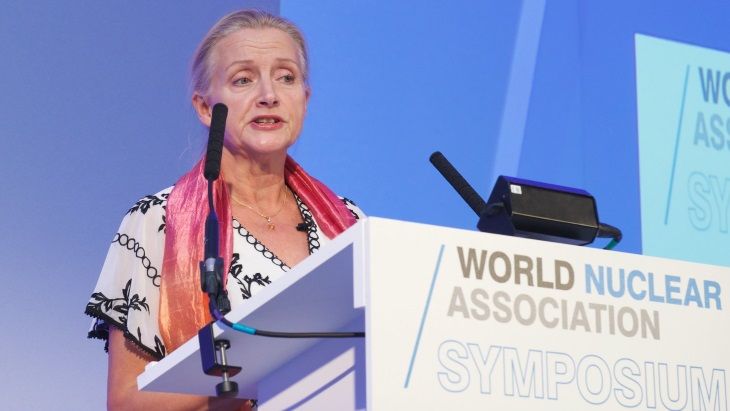
This was the shared message of Agneta Rising and Kirill Komarov, respectively the director general and chairman of World Nuclear Association, at the opening of its Symposium 2019 in London yesterday.
"Energy is essential for promoting human development and global demand is projected to increase significantly in the coming decades," Rising said. "Securing access to modern and affordable energy is essential for all, lifting people out of poverty and promoting energy independence and economic growth. Nuclear energy is a proven solution with a long established track record.
"The 445 nuclear reactors in 30 countries are the low-carbon backbone of electricity systems, operating in the background, day in day out, often out of sight and out of mind, capable of generating an immense amount of clean power. They are the silent giants upon which we rely today.
"Nuclear power showed that it can be the catalyst for delivering a sustainable energy transition long before climate change was on the agenda. Nuclear power is the fast-track to a high-powered and clean energy system, which not only delivers a healthier environment and an affordable supply of electricity, but also strengthens energy security and helps mitigate climate change."
Growing recognition
Komarov, who is first deputy director general for corporate development and international business at Russia’s Rosatom, directly highlighted the increasing importance of nuclear power to policy influencers.
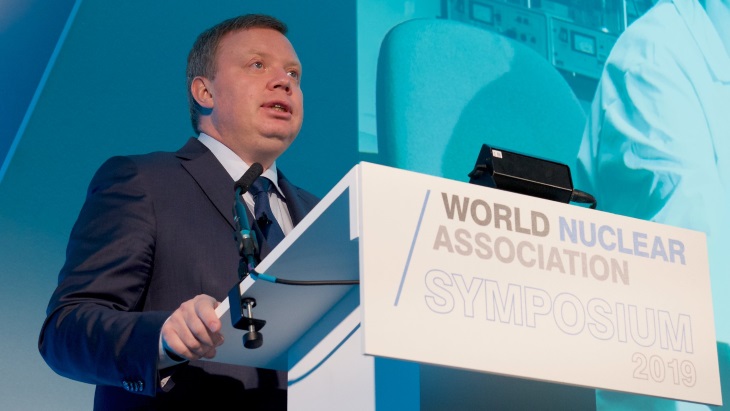
A UN document published in October last year concluded that a large increase in the use of nuclear power would help keep global warming to below 1.5 degrees. This Intergovernmental Panel on Climate Change (IPCC) special report - Global Warming of 1.5 degrees - was commissioned by governments at COP21 in Paris in 2015.
In May this year, the IEA unveiled its policy recommendations for the many countries that see a role for nuclear power in their energy transitions in a new report it launched at the 10th Clean Energy Ministerial (CEM10) in Vancouver, Canada. Titled Nuclear Power in a Clean Energy System, it was the Paris-based agency's first report addressing nuclear power in nearly two decades in order, it said, "to bring this important topic back into the global energy debate".
And at the 24th World Energy Congress in Abu Dhabi next week, WEC will launch its own new report - World Energy Scenarios: Futures of Global Nuclear to 2060 - which it produced in consultation with World Nuclear Association. At the same forum, the Association will launch its white paper on the place of nuclear energy in a clean energy system.
Komarov said the power industry as a whole has been facing a major challenge to provide universal access to electricity and to decarbonise electricity production. This twin task, he said, is being reflected in the energy policies of leading nations, in the UN's Sustainable Development Goals (SDGs) and in decisions made at COP21. It also underlines, he added, the World Nuclear Association's Harmony programme, which aims for nuclear power to increase its share of global electricity generation from 10% to 25% by 2050.
"Nuclear energy is an established source of stable and affordable electricity worldwide," he said, "but it is struggling to get the recognition it deserves for its contribution to clean energy development." Nuclear is "irreplaceable in achieving decarbonisation", he said, since existing nuclear power plants already avoid the emission of about 2 billion tonnes of CO2 each year. "The question is, in 15 to 20 years' time, how far will nuclear energy go in helping to avoid climate change, given that decisions will need to be made on lifetime extensions for reactor units in operation today and on building new ones."
Now is the time, he said, to look at nuclear energy "through the prism of sustainability" and the UN's SDGs. Nuclear power is relevant to ten out of the 17 SDGs, he noted, and as such is the "frontrunner" among sources of energy, followed by renewables and hydropower.
"The fundamental role of nuclear power in providing a better life for people all around the world urges us to introduce nuclear to the agenda of the major international development and sustainable development forums," he said. In addition to the IPCC, IEA and WEC, these also include the Nuclear Innovation: Clean Energy Future (NICE Future) initiative which was launched in May 2018 at CEM9 in Copenhagen. In addition, the International Atomic Energy Agency will hold its first conference on to climate change, at its Vienna headquarters early next month.
Komarov said World Nuclear Association's strength lay in its membership - more than 180 members, representing countries with more than 80% of the world’s population. Its commitment, he added, was not only to the established nuclear industry, but also to newcomer countries to nuclear power through its World Nuclear Spotlight events. Designed to bring together key national and international stakeholders involved in advancing such plans and providing an opportunity to exchange information and experience, the first Spotlight was held in November last year in Warsaw. Polish Energy Minister Krzysztof Tchórzewski made a keynote speech at the event, saying that his ministry was actively discussing the country's potential adoption of nuclear power. The following month, he announced the country plans to build its first nuclear power units in the Pomerania region in the north of the country, by 2033. World Nuclear Spotlight Poland was followed in April this year with one in Rio de Janeiro, where Brazilian Minister of Mines and Energy Bento Albuquerque said Brazil was committed to resuming the Angra 3 project. The third Spotlight will take place next month in Nur-Sultan, Kazakhstan.
So far, so Harmony
Launched at Symposium 2015, the Harmony programme aims to achieve a 25% share of world electricity production by 2050 through the addition of 1000 GWe of new capacity. It encompasses three objectives - a level playing field for all clean-energy sources of electricity, harmonised regulatory processes, and an effective safety paradigm.
To meet the Harmony goal, World Nuclear Association says the average build rate required is: 10 GWe per year between 2016 and 2020; 25 GWe per year between 2021 and 2025; and 33 GWe per year between 2026 and 2050.
Yesterday, Rising highlighted the need to triple construction rates from current levels in order to optimise nuclear energy's role in sustainable development.
"The IEA's latest report on nuclear energy highlighted the importance of dependable baseload electricity generation and the need to properly value and compensate them for the electricity security and reliability services they provide," Rising said. "It also concluded that without an expanded contribution from nuclear energy, the huge challenge of achieving emissions reductions will become drastically harder and more costly. The global nuclear industry, led by World Nuclear Association, is ready to take up the challenge."
Referring to the World Nuclear Performance Report 2019, which the Association published last week, Rising said there had been real progress towards the Harmony target.
Nuclear reactors generated a total of 2563 TWh of electricity in 2018, up from 2502 TWh in 2017. This was the sixth successive year that nuclear generation had risen, according to the report, with output 217 TWh higher than in 2012. Last year the global capacity factor was 79.8%, down from 81.1% in 2017, but still at the high level of performance seen since 2000. There is no significant age-related trend in nuclear reactor performance, it notes, since the mean capacity factor for reactors over the last five years shows little variation with age.
It makes no difference whether a reactor is "totally brand new" or has operated for 50 years, it will still be operating at high capacity factors, Rising said.
Construction started last year on a total capacity of 6.3 GWe - on Akkuyu 1 in Turkey, Hinkley Point C in the UK, Kurst II-1 in Russia, Rooppur 2 in Bangladesh and Shin-Kori 6 in South Korea.
In 2016-2017, a total of 14 new units started construction - eight in China, two in Pakistan, and one each in Russia, South Korea and the USA. In 2018-19, there were nine in China, three in Russia and one in South Korea.
There are 19 units scheduled to start up by 2020 - nine in China, two each in Belarus and Russia, and one each in Finland, India, Japan, Slovakia, South Korea and the UAE.
According to the report, in the five years between 2016 and 2020, there are due to be 47 new reactors online in 11 countries, of which two are newcomers to nuclear power. In total, these 47 reactors add 15% to global nuclear capacity. They are based on 20 different designs, of which nine are being built for the first time.
"This is fantastic development," Rising said. "If we look at the Harmony programme in 2016 to 2020, the construction rate doubled from a trend of less than 5 gigawatts per year to 10 gigawatts per year. So the 50 gigawatts projected will be delivered. But this is only the beginning. From this level we need to double and then to triple the rate."
Komarov said the Harmony target is achievable if the industry "has the will and real motivation". Rising added: "Nuclear energy is being talked about and written about in new reports and in conversations between governments and organisations. We are wanted. We are dynamic. We are essential."
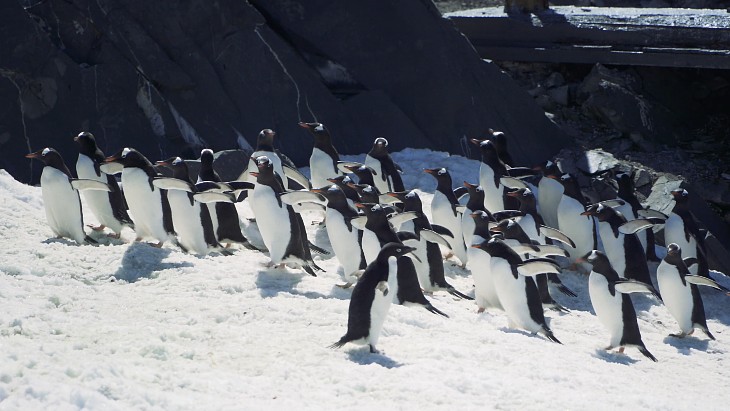
_99697.jpg)
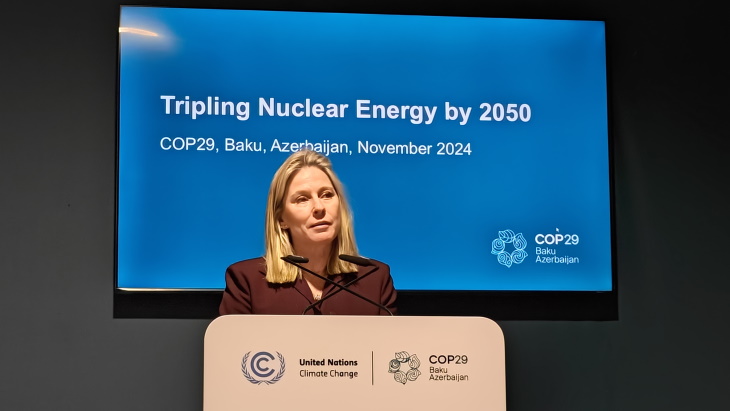
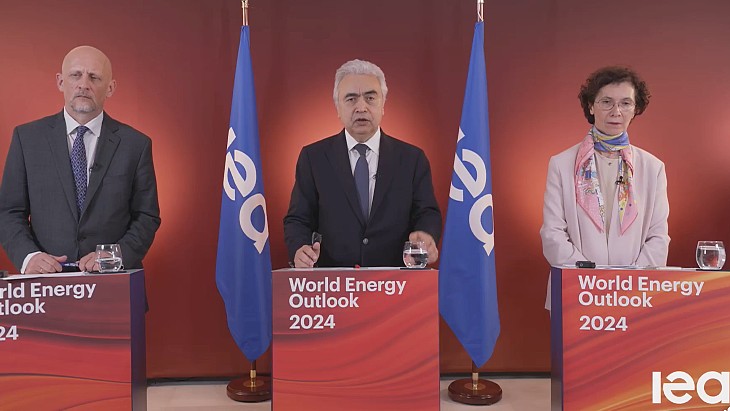






_88592.jpg)

